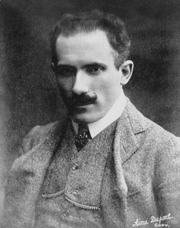Arturo Toscanini's Human Design Chart
1/3 Emotional GeneratorItalian conductor, revered by many as the greatest conductor of his time during a career that spanned 70 years. Considered without peer in the symphonic interpretations of Beethoven and Brahms, Toscanini is also credited with restoring proper style to Italian opera, particularly those of Verdi.
He was a cellist at age nine and, not long out of school, was hired as first cellist and assistant chorus master by the impresario Claudio Rossi, who was organizing an opera tour of Brazil. Though only 19, Toscanini was forced to lead the performance of “Aida,” following the expulsion of the original conductor, and won over an unruly audience prone to jeering. So he began his career as conductor of the Rio de Janeiro opera in 1886.
Returning to Italy, he conducted the premieres of “Pagliacci,” in 1892, and “La Boheme,” 1896.
Toscanini became principal conductor of Italy’s leading opera house, La Scala, in Milan, from 1898 to 1903. From 1908 to 1915 he was principal conductor of the Metropolitan Opera House in New York City. He conducted the New York Philharmonic from 1926 to 1936. In 1937, he became conductor of the National Broadcasting Company Symphony Orchestra which had been organized specifically for him.
His last concert was on 4 April 1954, when he faltered during a live radio broadcast of an all-Wagner program with the NBC Symphony Orchestra in Carnegie Hall. NBC quickly took the program off the air. Toscanini momentarily recovered, and NBC turned the microphones on again, but then started to leave the podium without completing the piece. He never conducted again.
After a New Year’s party in 1957, Toscanini suffered a hemorrhage, then several more over the next week. He came out of a coma on 15 January 1957 to sing a snatch from Verdi’s “Aida,” the opera that had made his name when he had conducted it from memory. The next morning, he was dead.
Link to Wikipedia biography
Discover More Famous People
Browse and analyze over 55,000 public figures and celebrities.
Ra Uru Hu
5/1 Manifestor
Martha Stewart
4/6 Manifestor
David Lynch
4/6 Generator
Barack Obama
6/2 Projector
Steve Jobs
6/3 Generator
Vladimir Putin
5/1 Manifestor
Kim Kardashian
3/5 Generator
Michael Jackson
1/3 Projector
Marilyn Monroe
6/2 Projector
Ariana Grande
2/4 Projector
Oprah Winfrey
2/4 Generator
Johnny Depp
2/4 ManifestorWhat is HumanDesign.ai and how does it work?
Curious what makes Arturo Toscanini tick? HumanDesign.ai instantly maps their exact birth data into a fully interactive clickable bodygraph chart, letting you hover or tap every center, channel, and gate for plain-language explanations. Bella, the platform’s built-in AI guide, adds context in real time, translating complex mechanics into everyday insights so you can see how Arturo Toscanini’s strengths, challenges, and life themes play out on-screen.
The same tools are waiting for you. Generate your own Human Design Chart in seconds, open a library of 2000+ suggested questions, and chat with Bella as often as you like to decode your design, daily transits, and even relationship dynamics.
Want to compare energies? Save unlimited charts for friends, family, or clients, then ask Bella to reveal compatibilities, composite patterns, or coaching tips, all in one conversation thread.
Start free with core features, or unlock our Personal and Pro plans for deeper dives: unlimited Q&A, celebrity chart search spanning 55,000+ public figures, white-label PDF reports, branded content generation, and a professional profile with built-in booking for practitioners. Whether you’re exploring your own potential or guiding others, HumanDesign.ai delivers an ever-expanding toolbox of AI-powered insights—no spreadsheets, no jargon, just clarity at your fingertips.
Ready to see yours? Signup for FREE today!

